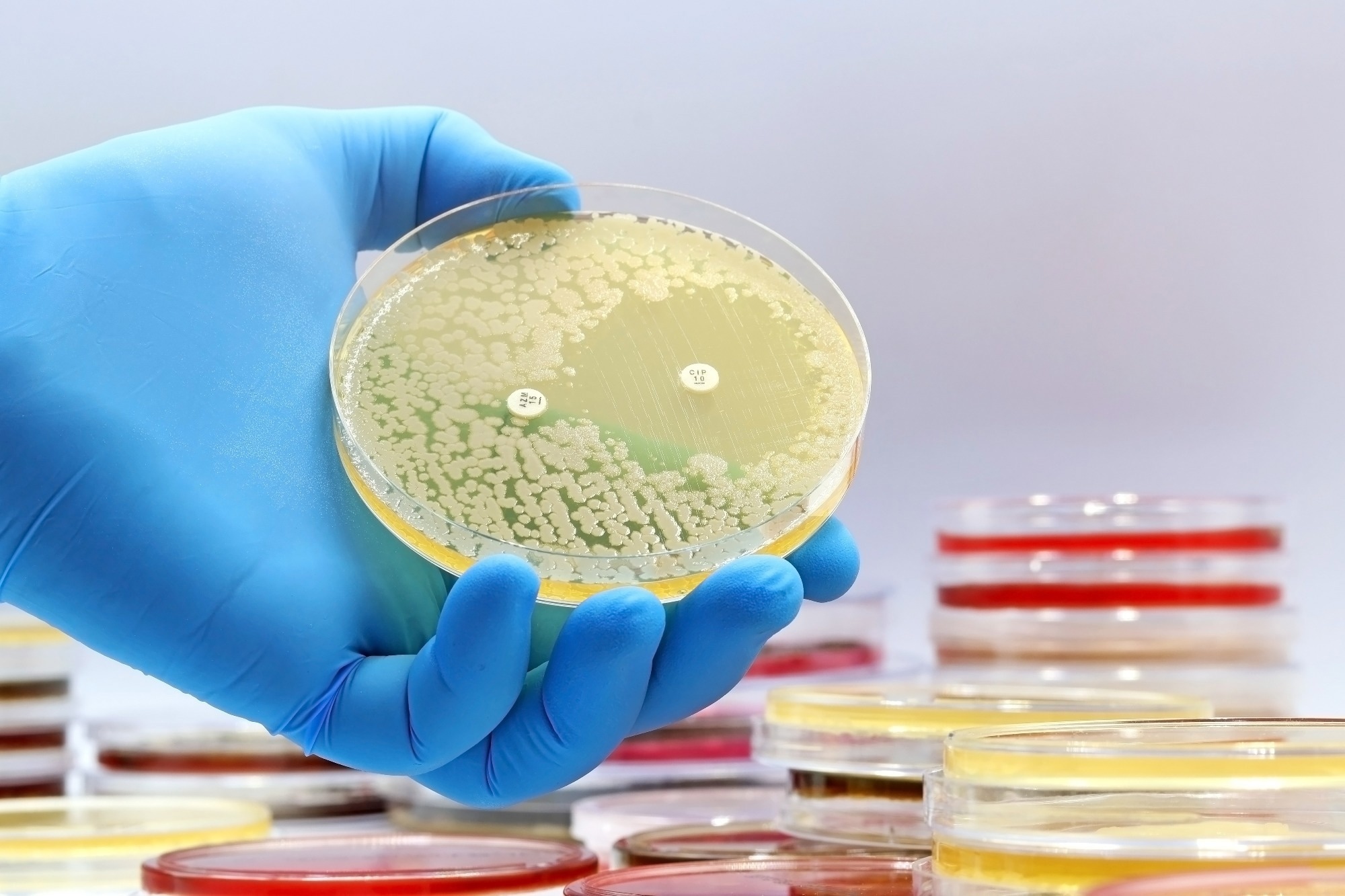Reviewed by Lauren HardakerOct 31 2025
Researchers at McGill University have identified two enzymes that use a previously unknown mechanism to provide resistance, adding a new layer of understanding to the global fight against antimicrobial resistance (AMR), one of the world's top 10 public health threats. The results of the study are published in the journal Communications Chemistry.
 Image credit: TopMicrobialStock/Shutterstock.com
Image credit: TopMicrobialStock/Shutterstock.com
Albert Berghuis, a professor at McGill University, along with Mark Hemmings, a Ph.D. student in Berghuis’s laboratory, were investigating the various types of enzymes responsible for antibiotic resistance when they encountered a structure that had never been observed before.
Many resistance enzymes function by imitating the antibiotic’s target within the bacterial cell, thereby intercepting and neutralizing the drug before it can perform its intended function. However, they discovered two enzymes that combat aminoglycoside antibiotics without employing this target-mimicry strategy.
Aminoglycosides represent a category of broad-spectrum antibiotics for the treatment of severe bacterial infections.
We found two enzymes that don’t mimic the target at all. So, we wondered, are these still superbugs?
Albert Berghuis, Professor, McGill University
Using the Canadian Light Source, the researchers investigated the molecular structure of the enzymes and the drugs with which they interact. They observed that the enzymes, identified as AAC(3)-Ia and AAC(3)-XIa, attach to the drug when its central ring structure is distorted into a pretzel configuration instead of its typical flat disc shape.
This mechanism did not appear to be particularly effective for resistance. According to Berghuis, aminoglycoside molecules exist in a pretzel shape approximately 0.1% of the time, which provides limited opportunities for enzymes to capture and deactivate them.
We didn’t expect them to be very good enzymes. One of them was pretty bad, but the other is actually just as good as the ones that do target mimicry.
Mark Hemmings, Ph.D. Student, McGill University
The results were a surprise: AAC(3)-XIa seriously outperformed expectations. The researchers indicate that further investigation is necessary to understand how the enzyme can function effectively, given its infrequent activation in "attack" mode.
Berghuis states that this research is expected to contribute to the battle against antibiotic resistance by emphasizing that there are more types of enzymes responsible for resistance than previously believed. It is essential for researchers to regard these unconventional enzymes with greater seriousness once they are discovered in bacterial genomes.
Before, we would have ignored enzymes like this, but now we have to take them into account. The problem (of antibiotic resistance) has grown and made life more complicated.
Albert Berghuis, Professor, McGill University
Unique enzymes use never before seen mechanism to resist antibiotics
Unique enzymes use never-before-seen mechanism to resist antibiotics. Video Credit: Canadian Light Source/Youtube.com
Source:
Journal reference:
Hemmings, M., et al. (2025) Enzyme-mediated aminoglycoside resistance without target mimicry. Communications Chemistry. doi.org/10.1038/s42004-025-01666-0